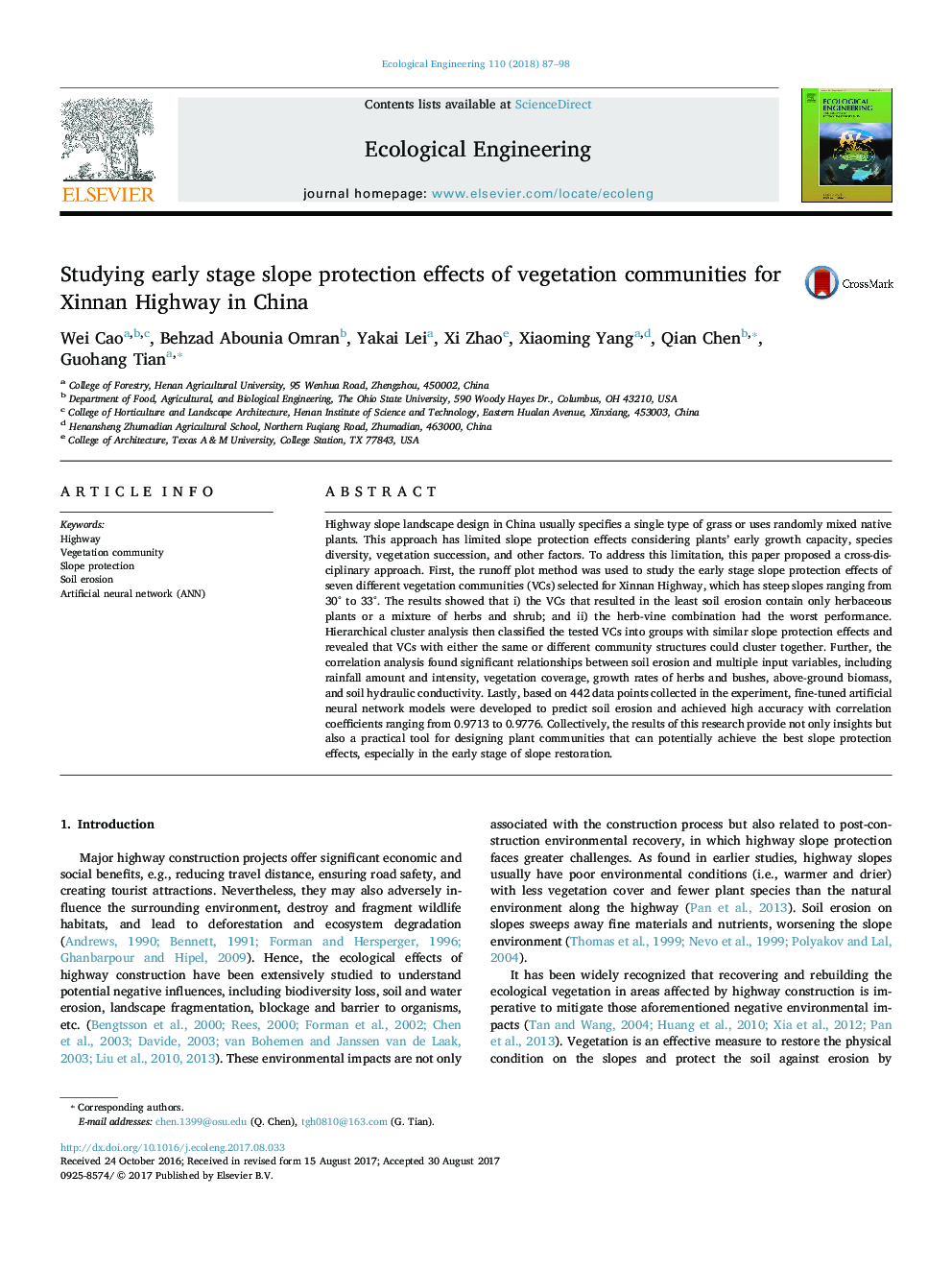| Article ID | Journal | Published Year | Pages | File Type |
|---|---|---|---|---|
| 8848123 | Ecological Engineering | 2018 | 12 Pages |
Abstract
Highway slope landscape design in China usually specifies a single type of grass or uses randomly mixed native plants. This approach has limited slope protection effects considering plants' early growth capacity, species diversity, vegetation succession, and other factors. To address this limitation, this paper proposed a cross-disciplinary approach. First, the runoff plot method was used to study the early stage slope protection effects of seven different vegetation communities (VCs) selected for Xinnan Highway, which has steep slopes ranging from 30° to 33°. The results showed that i) the VCs that resulted in the least soil erosion contain only herbaceous plants or a mixture of herbs and shrub; and ii) the herb-vine combination had the worst performance. Hierarchical cluster analysis then classified the tested VCs into groups with similar slope protection effects and revealed that VCs with either the same or different community structures could cluster together. Further, the correlation analysis found significant relationships between soil erosion and multiple input variables, including rainfall amount and intensity, vegetation coverage, growth rates of herbs and bushes, above-ground biomass, and soil hydraulic conductivity. Lastly, based on 442 data points collected in the experiment, fine-tuned artificial neural network models were developed to predict soil erosion and achieved high accuracy with correlation coefficients ranging from 0.9713 to 0.9776. Collectively, the results of this research provide not only insights but also a practical tool for designing plant communities that can potentially achieve the best slope protection effects, especially in the early stage of slope restoration.
Related Topics
Life Sciences
Agricultural and Biological Sciences
Ecology, Evolution, Behavior and Systematics
Authors
Wei Cao, Behzad Abounia Omran, Yakai Lei, Xi Zhao, Xiaoming Yang, Qian Chen, Guohang Tian,
